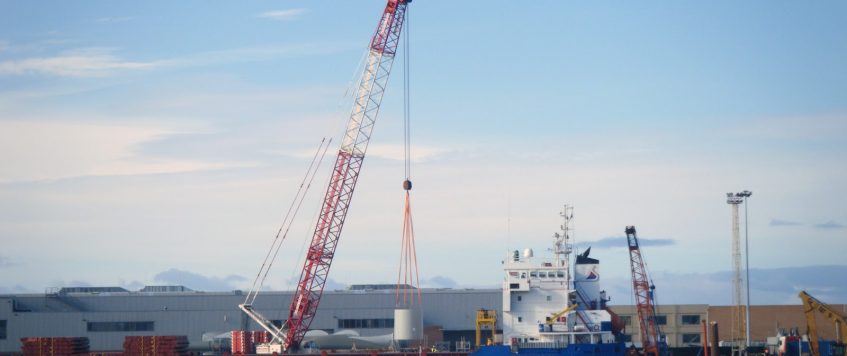-
06
Feb
La Coruna Port reached its historical record
Coruna Port strengthens its position as the first Galician Port relative of traffic volume
The goods with the greatest increase were the solid bulk ( the sector with the most presence in the New Outer Port) which demonstrates the impact of Punta Langosteira on the overall growth.
Traffic increased in solid and liquid bulk, with a special impact on energy and agri-food.
It was also very remarkable the growth in fresh fishing, with the second best record of the century, and cruises, with historical figures and leading the Cantabrian-Atlantic coast.
The Port of A Coruña has closed the year of 2017 with a historic record having exceeded 15 million tons for the first time in freight traffic. The growth of the movement accumulated between January and December of 2017 is established at 9.1% with respect to the same period of the previous year, having stadt at 15.19 million tons.
These figures reinforce the position of the port of La Coruna as the first in Galicia in volume of traffic overcoming others as Vigo and Ferrol, and highlight the extraordinary moment that our Port lives in terms of movement of goods, supported by the fundamental role played by the consolidation of regular traffic in the Outdor Port of Punta Langosteira. Around 45% of the bulk solids are already moved by Punta Langosteira and this is precisely the sector that has shown the highest growth in 2017, with 16.4%, having exceeded 5 million tons.
The energy and agri-food products are the most important in the area of solid bulk, whose potential is evident in the figures registered last year, with a significant increase in coal traffic, that reached 45%, exceeding 1.2 million tons, and corn, which reached 35% and more than one million tons. Bulk cement also continues to rise, as well as flours, fertilizers or barley. The Outer Port already serves as a hub port for cereals and other raw materials for animal feed, both because of its strategic location and also for the advantages it offers for the management of large volumes of products and the storage area, which already exceeds that of the port indoor Port of La Coruna. In Punta Langosteira, the main operators of the sector have been implanted, such as Perez Torres Maritima, Terminales Maritimos de Galicia (TMGA) and Galigrain – Ceferino Nogueira.
About liquid bulks, they grew above 7.6%, exceeding 8.7 million tons. The goods that was most increased were crude oil, with 6% and more than 5.4 million tons, and refined products such as gasoil and fuel oil, which also showed significant growth. Only general comsumption products decreases, with 9.7%, due to variations in demand flows of steel products and construction materials.
As happens with solid bulks, liquid bulks will play a key role in the growth of the Port once the transfer of Repsol Oil Terminal to Langosteira and the implementation of the new terminal of Oil Deposit Coruna be completed.
The traffic in Punta Langosteira reached 2.33 million tons in 2017, a figure also unprecedented since the start of complex a couple of years ago. The increase amounted to 63% with respect to 2016, year in which they had reached 1.46 million tons.
Regarding fresh fishing, it has presented very significant increases, with 17% and exceeding 51,000 tons. It is the second best record of the century in this strategic sector in the city, which employs more than 10,000 people and is one of the Port Authority’s major goals for the future growth of the interior port and its specialization in clean goods, once all the bulk be moved to Punta Langosteira.
The growth of cruise traffic has also been spectacular, far exceeding the forecasts for 2017 and with an increase of 45.2% over the previous year. During the past year there was more than 184,000 passengers in more than 120 cruise arrivals and La Coruna was consolidated itself as leader of the Cantabrian-Atlantic coast in number of berths and also in number of cruise passengers.
